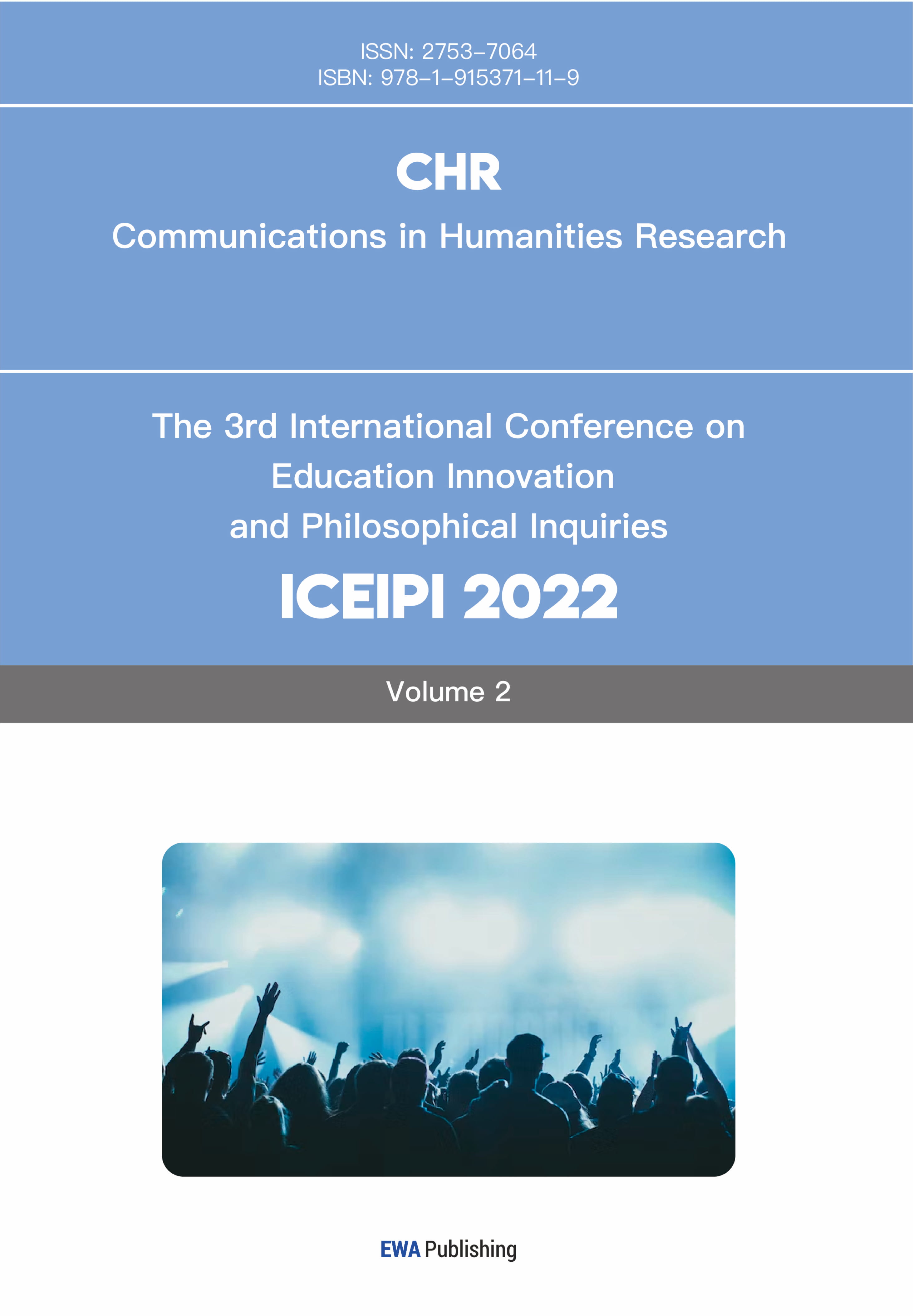References
[1]. GOBLE, G. C. (2019). Esoteric Buddhism in Context: Tang Imperial Religion. In Chinese Esoteric Buddhism: Amoghavajra, the Ruling Elite, and the Emergence of a Tradition (pp. 59–94). Columbia University Press.
[2]. Wright, A. F. (1990). Buddhism and Chinese Culture: Phases of Interaction. In R. M. Somers (Ed.), Studies in Chinese Buddhism (pp. 1–33). Yale University Press.
[3]. Robson, J. (2009). Regional Buddhism During the Tang. In Power of Place: The Religious Landscape of the Southern Sacred Peak (Nanyue) in Medieval China (1st ed., Vol. 316, pp. 257–318). Harvard University Asia Center.
[4]. Karetzky, P. E. (1994). Esoteric Buddhism and the Famensi Finds. Archives of Asian Art, 47, 78–85.
[5]. Sen, T. (2001). In Search of Longevity and Good Karma: Chinese Diplomatic Missions to Middle India in the Seventh Century. Journal of World History, 12(1), 1–28.
[6]. Holcombe, C. W. (2004). Southern Integration: The Sui-Tang (581-907) Reach South. The Historian, 66(4), 749–771.
[7]. Houtart, F. (1976). Buddhism and Politics in South-East Asia: Part One. Social Scientist, 5(3), 3–23.
[8]. Chakrabarti, D. K. (1995). Buddhist Sites across South Asia as Influenced by Political and Economic Forces. World
[9]. Berkwitz, S. C. (2012). THE EXPANSION OF BUDDHISM IN SOUTH AND SOUTHEAST ASIA. In V. Krech & M. Steinicke (Eds.), Dynamics in the History of Religions between Asia and Europe: Encounters, Notions, and Comparative Perspectives (pp. 223–234). Brill.
[10]. FOGELIN, L. (2012). Material Practice and the Metamorphosis of a Sign: Early Buddhist Stupas and the Origin of Mahayana Buddhism. Asian Perspectives, 51(2), 278–310.
Cite this article
Liu,S.;Yang,X. (2023). The Architectural Style of Ancient Buddhist Temples between China and Thailand: The Baima Temple in Luoyang, China, and the Temple of the Emerald Buddha in Krung Thep Maha Nakhon, Thailand. Communications in Humanities Research,4,459-464.
Data availability
The datasets used and/or analyzed during the current study will be available from the authors upon reasonable request.
Disclaimer/Publisher's Note
The statements, opinions and data contained in all publications are solely those of the individual author(s) and contributor(s) and not of EWA Publishing and/or the editor(s). EWA Publishing and/or the editor(s) disclaim responsibility for any injury to people or property resulting from any ideas, methods, instructions or products referred to in the content.
About volume
Volume title: Proceedings of the International Conference on Interdisciplinary Humanities and Communication Studies (ICIHCS 2022), Part 2
© 2024 by the author(s). Licensee EWA Publishing, Oxford, UK. This article is an open access article distributed under the terms and
conditions of the Creative Commons Attribution (CC BY) license. Authors who
publish this series agree to the following terms:
1. Authors retain copyright and grant the series right of first publication with the work simultaneously licensed under a Creative Commons
Attribution License that allows others to share the work with an acknowledgment of the work's authorship and initial publication in this
series.
2. Authors are able to enter into separate, additional contractual arrangements for the non-exclusive distribution of the series's published
version of the work (e.g., post it to an institutional repository or publish it in a book), with an acknowledgment of its initial
publication in this series.
3. Authors are permitted and encouraged to post their work online (e.g., in institutional repositories or on their website) prior to and
during the submission process, as it can lead to productive exchanges, as well as earlier and greater citation of published work (See
Open access policy for details).
References
[1]. GOBLE, G. C. (2019). Esoteric Buddhism in Context: Tang Imperial Religion. In Chinese Esoteric Buddhism: Amoghavajra, the Ruling Elite, and the Emergence of a Tradition (pp. 59–94). Columbia University Press.
[2]. Wright, A. F. (1990). Buddhism and Chinese Culture: Phases of Interaction. In R. M. Somers (Ed.), Studies in Chinese Buddhism (pp. 1–33). Yale University Press.
[3]. Robson, J. (2009). Regional Buddhism During the Tang. In Power of Place: The Religious Landscape of the Southern Sacred Peak (Nanyue) in Medieval China (1st ed., Vol. 316, pp. 257–318). Harvard University Asia Center.
[4]. Karetzky, P. E. (1994). Esoteric Buddhism and the Famensi Finds. Archives of Asian Art, 47, 78–85.
[5]. Sen, T. (2001). In Search of Longevity and Good Karma: Chinese Diplomatic Missions to Middle India in the Seventh Century. Journal of World History, 12(1), 1–28.
[6]. Holcombe, C. W. (2004). Southern Integration: The Sui-Tang (581-907) Reach South. The Historian, 66(4), 749–771.
[7]. Houtart, F. (1976). Buddhism and Politics in South-East Asia: Part One. Social Scientist, 5(3), 3–23.
[8]. Chakrabarti, D. K. (1995). Buddhist Sites across South Asia as Influenced by Political and Economic Forces. World
[9]. Berkwitz, S. C. (2012). THE EXPANSION OF BUDDHISM IN SOUTH AND SOUTHEAST ASIA. In V. Krech & M. Steinicke (Eds.), Dynamics in the History of Religions between Asia and Europe: Encounters, Notions, and Comparative Perspectives (pp. 223–234). Brill.
[10]. FOGELIN, L. (2012). Material Practice and the Metamorphosis of a Sign: Early Buddhist Stupas and the Origin of Mahayana Buddhism. Asian Perspectives, 51(2), 278–310.









